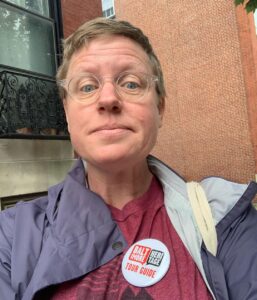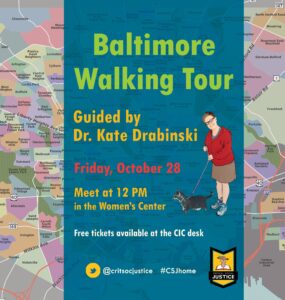Principal Lecturer, Gender, Women’s and Sexuality Studies
 “My approach to diversity, equity, and inclusion is shaped by my work as a teacher. No matter the course, I want students to understand that the world as it is is not the world as it has to be. It is shaped by the daily decisions we make, the organizing we do, the ways we are with each other. The world can be otherwise, and we can make it so.
“My approach to diversity, equity, and inclusion is shaped by my work as a teacher. No matter the course, I want students to understand that the world as it is is not the world as it has to be. It is shaped by the daily decisions we make, the organizing we do, the ways we are with each other. The world can be otherwise, and we can make it so.
What this looks like depends on the class. In Introduction to Transgender Studies, for example, we start by learning about transgender history so that students understand that gender diversity is as old as gender itself. We learn about the transgender activists and organizers who have changed the world for all of us, and students are encouraged to think about changes they want to see at UMBC and in their other communities and how to make those changes.
In another course, Unruly Bodies, students learn to translate challenging theoretical materials into accessible blog posts that connect what they learn in the classroom to what is happening in our lives. Reading the blog together shows us all how different experiences and backgrounds shape ideas, and we can see how much better we learn when there are truly diverse voices at the table. If we are going to build a new world in the shell of the old, we need everybody there to help.
I also teach students to pay attention to their built environment, and to think about the arguments that environment makes about who belongs. We go on walking tours in Baltimore to experience the challenges of crossing Martin Luther King, Jr. Boulevard as a concrete way into understanding the damage urban renewal has done to African American neighborhoods in the city. We walk down Pratt Street to learn about the history of labor activism–the Great Railroad Strike of 1877 and the United Workers fight for fair wages at Orioles Stadium at Camden Yards. I make and share video stories about Baltimore’s history, from the origins of our sewer and water systems to today’s farmer’s markets and urban farms. We have to understand how we got here if we are going to figure out where we want to go and how to get there.
My classrooms are communities of learners, myself included, and the diversity of those classrooms is the best part of teaching at UMBC. I learn so much from students who consistently use the tools they pick up in my and other classrooms to push me to think more deeply and work harder to make classrooms accessible, equitable, and inclusive.”
Click here to check out the videos that Professor Drabinski has made for her summer special sessions classes on topics such as Fighting Food Insecurity in Baltimore, Exploring Baltimore’s ‘Correctional Campus,’ and Baltimore’s Farms and Markets.

